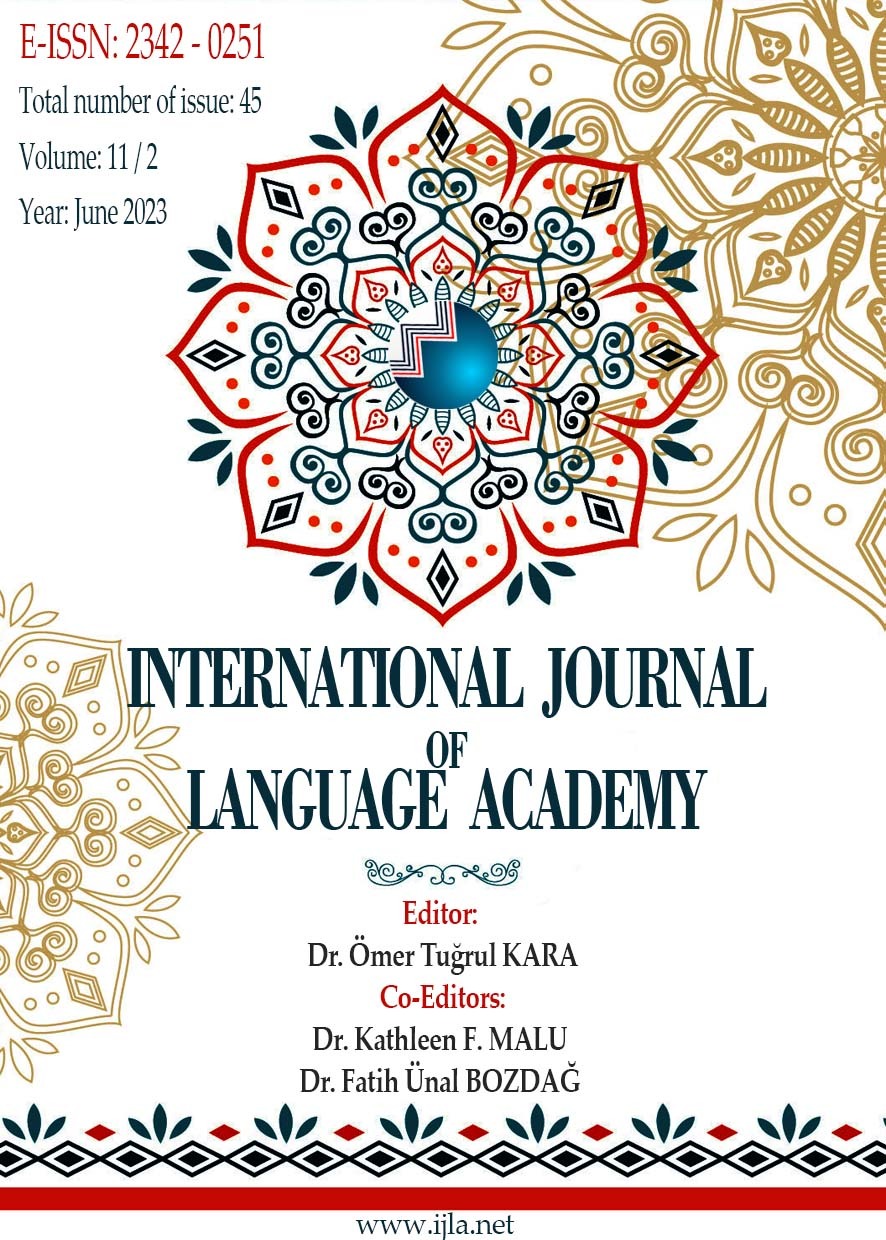BİLGİSAYAR DESTEKLİ İLETİŞİMDEKİ ŞİKÂYET SÖZ EDİM KULLANIMLARININ İNCELENMESİ: SİKAYETVAR.COM ÖRNEĞİ
Author :
Abstract
Bu araştırmada ana dili konuşurlarının bir web sitesi üzerindeki şikâyet söz edim kullanımlarının analiz edilerek şikâyet söz ediminin Türkçede nasıl gerçekleştirildiğinin belirlenmesi ve bu yolla hem yabancı dil olarak Türkçenin öğretilmesinde hem de ana dili olarak Türkçenin öğretiminde şikâyet söz edimi için bir rehber oluşturulması amaçlanmıştır. Bu amaç doğrultusunda günümüzde gelişen teknolojiyle birlikte ana dili konuşurlarının dil kullanımlarına ilişkin araştırmacılara önemli bir kaynak sağlayan bilgisayar destekli iletişimden yararlanılarak araştırma kapsamında “sikayetvar” adlı internet sitesinde yer alan 150 farklı şikâyet incelenmiştir. Doküman incelemesi yöntemiyle yürütülen araştırmada veriler içerik analiziyle çözümlenmiştir. Yapılan incelemenin sonucunda 281 şikâyet söz edimi stratejisi kullanıldığı belirlenmiştir. Türkçeyi ana dili olarak konuşanların şikâyet edimini gerçekleştirirken doğrudan stratejilerden suçlama ve hoşnutsuzluğu dile getirme stratejilerini daha çok tercih ettikleri anlaşılmıştır. Diğer yandan, otel ve hastane kategorilerindeki şikâyetlerde en çok hoşnutsuzluğu dile getirme stratejisi; kargo, hava yolu ve yemek siparişlerinde ise en çok suçlama stratejisi kullanıldığı görülmüştür. Yapılan incelemelerde erkeklerin kadınlara göre daha fazla strateji kullandığı görülmüşse de hem kadınların hem erkeklerin şikâyet ederken en çok suçlama ve en az diğerlerini uyarma stratejisi kullandıkları belirlenmiştir. Bu sonuçlar, şikâyet ediminin gerçekleşme biçiminin şikâyet ediminin gerçekleştirildiği kategoriden etkilenirken cinsiyetten etkilenmediğine işaret etmektedir. Sonuç olarak şikâyet söz ediminin ana dili kullanıcıları tarafından nasıl kullanıldığının farklı bağlamlarda incelenmesinin (farklı kategorilerde, yaş gruplarında, toplumun farklı katmanlarında, yüz yüze iletişimde vb.) ana dili öğretiminde ve dil sınıflarında söz edimlerinden daha etkili şekilde yararlanılabilmesi adına önemli olduğu ifade edilebilir.
Keywords
Abstract
The current study aims at analysing complaint speech acts of native language users on a website to identify how they are performed in Turkish language, which is expected to provide a guide for complaint speech act in teaching Turkish both as a foreign language and native language. For that purpose, we took the advantage of computer-mediated communication, which offers an important source for researchers regarding the language use of native speakers, and we examined 150 different complaints on the website called “sikayetvar. In this study, we employed the method of document analysis and analysed the study data via content analysis. At the end of the analysis, we found out that there were 281 complaint speech act strategies used in total. We also concluded that while performing a complaint speech act, native speakers of Turkish language mostly preferred the direct strategies of accusation and expression of negative state of mind. On the other hand, we concluded that the strategy of expression of negative personal state of mind was mostly used in the complaints about hotels and hospitals, whereas the strategy of accusation was mostly used in the complaints about cargo, air transportation and order outs. The study findings also showed that men used more strategies than women, while both men and women used accusation the most and warning others the least. These findings imply that the way complaint speech act occurs is affected by the category of complaint, but not by gender. Consequently, it is possible to state that examining how the complaint speech act, is used in different contexts (different categories, age groups, different layers of society, face-to-face communication, etc.) will contribute to the effective use of speech acts in teaching native languages and in language classes.





